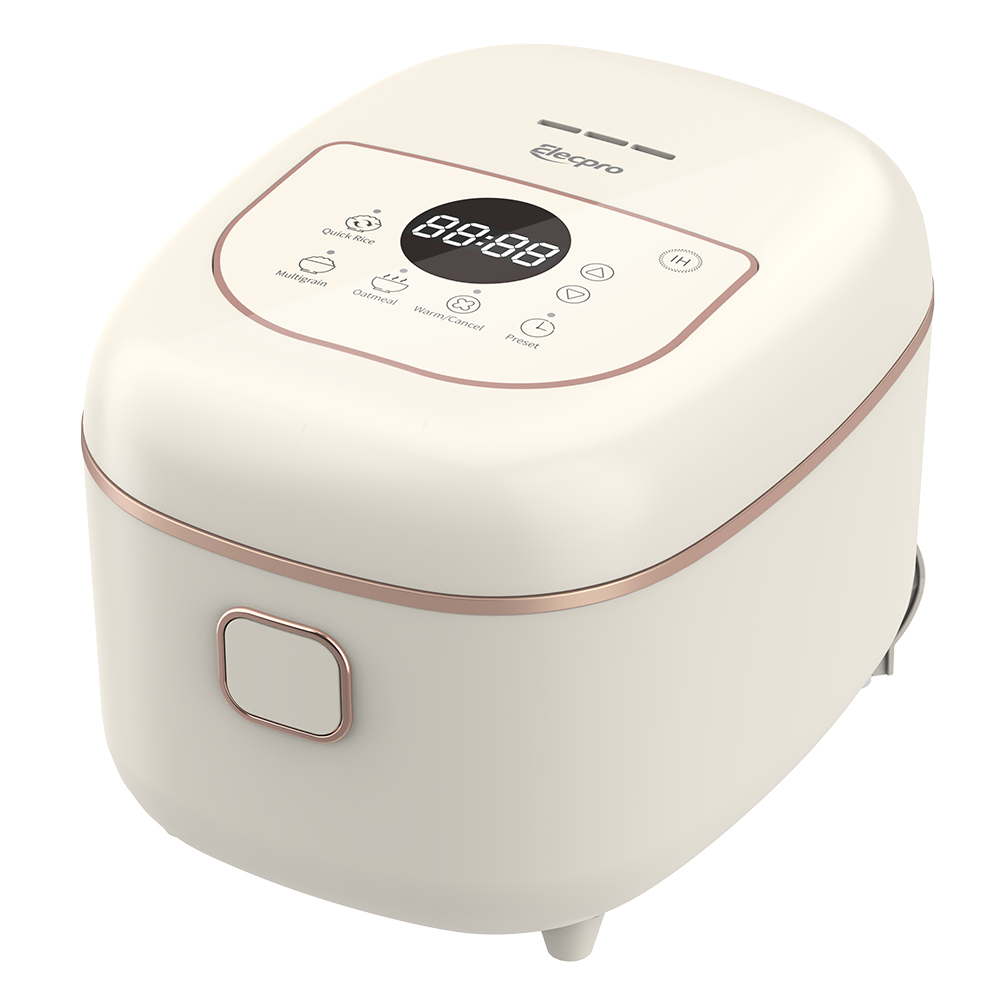The cultural significance of crispy rice crust has profoundly influenced electric rice cooker design across global markets, driving technological innovation and functional adaptations to meet diverse culinary expectations. Here's how regional preferences shape product development:
1. East Asian Markets: Prioritizing Controlled Crispiness
In cultures like China, Japan, and Korea, crispy rice is a celebrated culinary tradition (e.g., nurungji in Korea, okoge in Japan). This demand has spurred advancements in Induction Rice Cookers and
Electric Pressure Cookers, which use multi-stage heating algorithms to simulate traditional stovetop cooking. For instance, IH (Induction Heating) technology generates precise temperature gradients, allowing users to adjust browning intensity while maintaining fluffy upper rice layers. Pressure-cooking modes in Electric Pressure Cookers further enhance caramelization without scorching, achieving the delicate balance between crispiness and tenderness valued in dishes like Korean bibimbap or Japanese takikomi-gohan.
2. South Asian & Middle Eastern Preferences: Layered Texture Integration
In regions like Iran and India, crispy rice (tahdig, biryani crust) is integral to celebratory meals. Cookers here emphasize
Drum Rice Cookers with wide, shallow pots to maximize surface contact for uniform crust formation. Advanced models incorporate steam-control systems to preserve moisture in upper layers while crisping the base, mimicking the layered textures of Persian tahdig or biryani. Some designs even include detachable inner pots for easy crust extraction.
3. Western Markets: Minimizing Unintended Crispiness
In contrast, many Western consumers view crispy rice as an accidental byproduct.
Digital Rice Cookers in these regions prioritize anti-stick coatings (e.g., ceramic or stainless steel) and uniform heating to eliminate uneven browning. Features like "quick-cook" modes in Small Rice Cookers reduce cooking time, preventing prolonged heat exposure that could lead to crust formation. Additionally, programmable settings for grains like quinoa or oatmeal focus on soft, consistent textures rather than crispiness.
4. Health-Conscious Adaptations
Global health trends have reshaped crispy rice functionality. Low-sugar modes in Induction Rice Cookers separate starch-rich water to reduce calorie content while preserving a lightly crisped base. Hybrid designs combine air-frying capabilities with rice cooking, catering to snack-oriented uses like cơm cháy (Vietnamese crispy rice cakes) or gluten-free crackers.
5. Cultural Hybridization & Niche Markets
As migration and fusion cuisine grow, manufacturers now integrate customizable crispiness levels. Digital Rice Cookers with AI-driven sensors adjust heating patterns based on grain type (e.g., jasmine vs. basmati) and user preferences, while Electric Pressure Cookers offer "crust boost" buttons for ad-hoc crispiness. Compact Small Rice Cookers target solo diners seeking portion-controlled crispy rice for snacks or tea infusions, reflecting practices like Korean nurungji-cha.
The interplay of cultural heritage and technological innovation continues to redefine rice cookers, with designs like Digital Rice Cookers, Drum Rice Cookers,
Small Rice Cooker,
Induction Rice Cooker, and Electric Pressure Cookers embodying both tradition and modernity. These appliances not only cater to regional tastes but also bridge culinary identities in an increasingly interconnected world.




